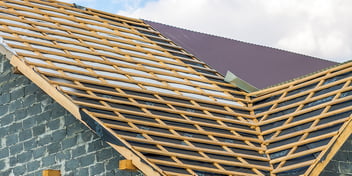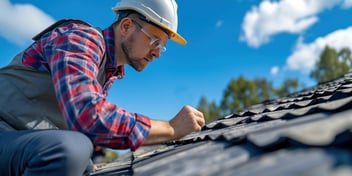- Home »
- Learningcenter »
- Temporary fixes leaking roof
FAQ: What Are Some Temporary Fixes for a Leaking Roof?
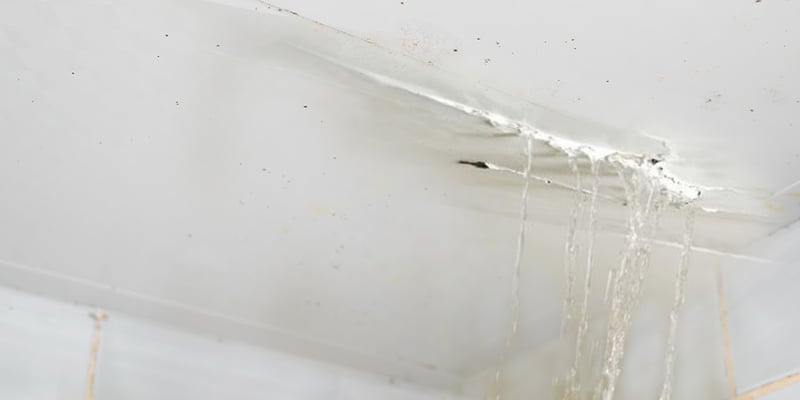
Have you ever had a leaky roof? It's not fun, right? While many things can cause roof leaks, severe weather exposure is often to blame. But we can't forget that poor installation or low-quality materials can also be part of the problem. Over time, these things can damage a roof and cause leaks.
Isn't it always best to get an expert to fix such problems? Skilled professionals know exactly what to do to find and fix your roofing issues quickly and accurately. They've got the tools and the know-how to keep your stuff safe and dry inside.
But what do you do if you can't get the pros right away? This doesn't mean your stuff has to get wet and damaged. Quick fixes can keep the water out until you can get the permanent fix in place. I've been through this myself!
So, let's talk about what you can do if you're in this situation!
The Causes of a Leaky Roof
So why do roofs leak? Is it from the shingles being broken, the flashing getting old, the roof just getting up there in years, the gutters getting clogged, the skylights or roof vents not working, or the underlayment wearing out?
Broken shingles can be a real pain in the neck—are you surprised that they're often the main culprit for leaks? They're what cover your house, but when bad weather hits, they can crack or fall off. And you know what that means? Yep—it makes it easier for water to get into your house.
Now, let's talk about flashing—that's the stuff made of metal strips that you'll see around your chimney or the edges of your roof. It's really important for stopping water from getting through. But did you know that bad weather or a poor installation job can cause the flashing to break, which could lead to leaks?
Think about this: Even roofs get old and stressed out, just like us! As roofs get older, they don't handle weather conditions as well, which could lead to all kinds of problems, including leaks.
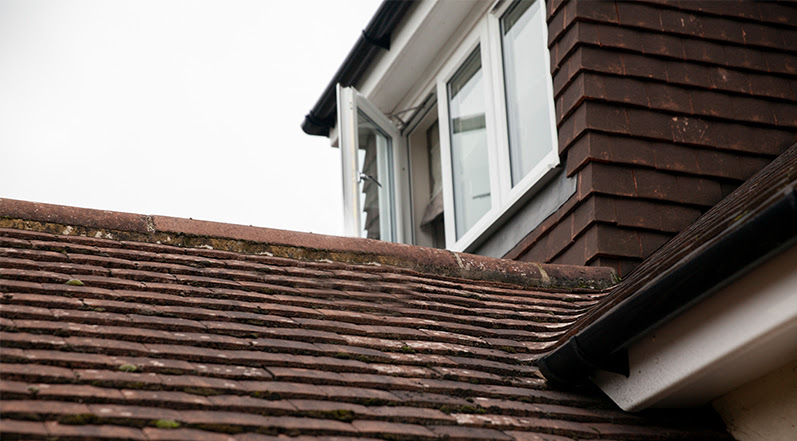
Gotta say, blocked gutters are a big deal, too, when it comes to roof leaks. Why? If gutters get clogged, water can't pass through. That means the water gets pushed under the roof—and guess what comes next? Leaks.
Ever thought about skylights and roof vents as a source of a leaky roof? When those fellows get old or don't fit properly anymore, water can get inside. And especially in colder places, ice can block the path for melted snow, which forces the water to go through the roof.
What about the underlayment? It's important stuff—it's a protective layer on your roof made from tar or asphalt. But if it wears out, water can find its way straight into your house.
Knowing this, you'll be better prepared to apply a quick fix to your leaky roof, at least until a pro can come and do a solid repair. Let's be real—even the smallest leaks can lead to big problems if you ignore them. So yes, really, knowing your roof can make a big difference in preventing leaks!
How Do Tarps Help in Temporary Roof Leaks Repair?
I've found waterproof tarps to be real problem solvers for quick fixes when it comes to roof leaks. These bad boys really show you what resilience looks like, not to mention how easy they are to use. And believe me when I say this - they are quite cheap!
How do you know which type of tarp to get? Well, heavy-duty waterproof ones are usually your best bet. The tight weave of the fabric makes it hard for anything to poke a hole through - perfect for the wildest of weather conditions.
Now, size matters—a lot! You'll want a tarp that's larger than the leaky area and is at the highest point of your roof. Why? It helps direct away any water pooling on flatter areas. Keep in mind that water is like a houseguest that overstays – you want it to slide right off and go on its way.

Once you've got the perfect tarp picked out, putting it in place is your next move. Start from the top of the roof and work your way down to cover the entire leaky patch. We don't want any surprises now, do we?
This reminds me to tell you something important – safety first! Dealing with roof work is not a walk in the park. So don't forget your safety gear.
Also, while a strong waterproof tarp can be your best friend during a roof leak crisis, this is a temporary method to give you time to call a roofer. If you find yourself wrestling with such an issue, perhaps it's time to roll out the tarp and grab your phone for a free roof inspection.
Utilizing Plastic Sheeting for Roof Leaks
If you don't have a tarp, heavy-duty plastic sheeting might be your best friend here. Let me show you how it can help until you get expert help.
So, the first thing is this - can you find out where the leak comes from? It might be tough because water usually goes the easiest way. It can be hard to spot the main source at times.
Once you spot the leak, carefully climb up to the roof using a ladder. Safety first, keep in mind!
Pull out your plastic sheeting; the thicker kind (about 4ml) is the best. You should cut it big enough to cover more than the leak - about a foot or two extra on each side.
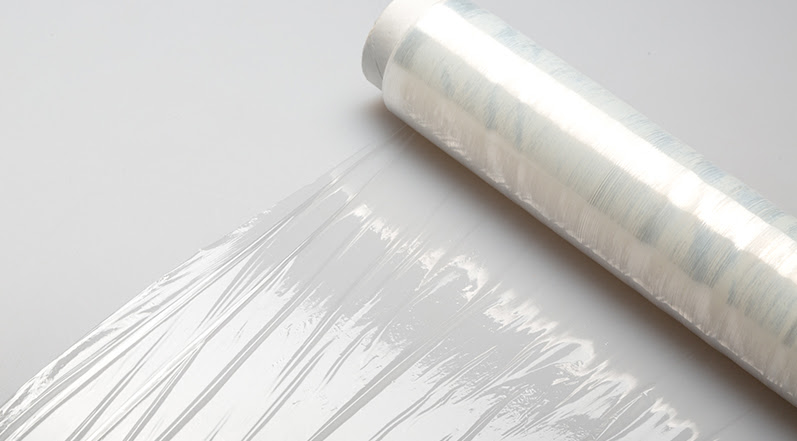
The next step is getting that plastic sheeting to stick. Use either roof nails or staples, and make sure to overlap on all sides to keep the water out. Here's a small trick - start at the bottom of your roof and go up. Each new piece should cover the one below it. This way, you guide the water off the sheet and better guard your house.
Why not nail some wooden strips on top of the sheet to make it hold better? I've done this before, and it really helps, especially against wind damage.
Now, again, just like the tarp solution above, plastic sheeting isn't a permanent solution. It's a quick fix until you can get your roof fully repaired by a pro. But in a pinch, you can count on it to protect your house from the rain and wind. You've got this!
What About Roofing Tape as a Temporary Fix?
Roofing tape is a handy little trick for annoying roof leaks. Good at covering small gaps, it can help keep your stuff dry for a bit.
Here's the fun part - you don't have to climb onto your roof to put it on! You can do it from inside your attic; find the problem area, slap some tape on it, and for a little while at least, that leak is plugged – who wouldn't appreciate that?
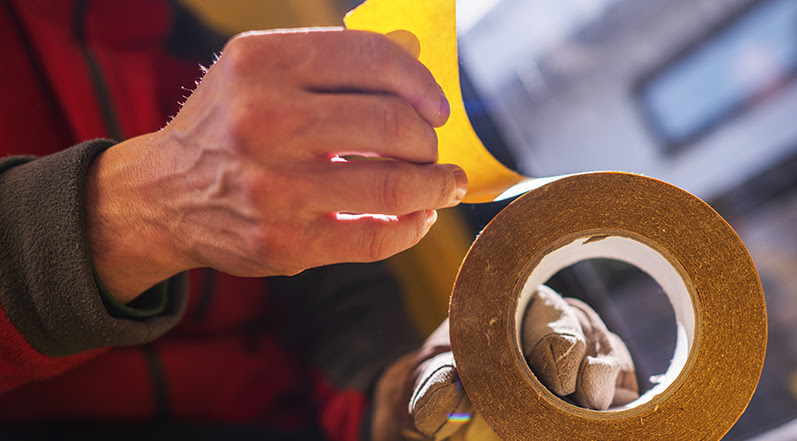
But let's be real here – roofing tape is no silver bullet. It's a quick fix that lasts until a real roofer can take over. It's great for slowing things down, but it's no permanent solution for keeping water out.
So why all this fuss about roofing tape not being a lasting fix? Well, once you've used it, you'll want to hurry up and get a pro in. Relying solely on tape isn't the best plan – it could threaten the general dryness of your building, and ensuring long-term protection against leaks is important.
I've run into leaks before, and I can tell you, roofing tape really saved my day until I could get the professionals in. So let me lay it out for you: roofing tape isn't the answer to all your leaks, but it's a great first step to control leaks before the experts can swoop in.
Applying Silicone Caulk on Leaks
Silicone caulk is like a help for fixing pesky roof leaks, at least for a little while. What's great about this stuff is how resilient it is- whether it is rain, shine, or hail, it stays in place. It wraps around the damaged part of the roof, creating a sturdy water barrier.
Is it tough to apply? Not at all!
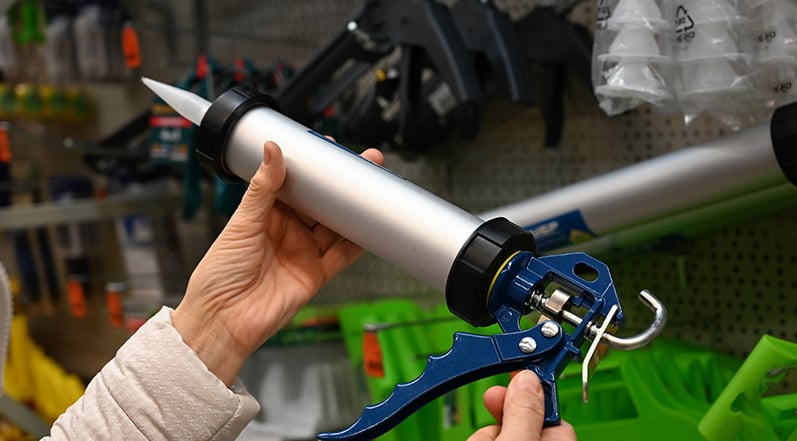
First things first, gather your tools: silicone caulk and a caulk gun. Next, get your roof ready. Clean the spot you're fixing, making sure it's free of loose dirt or debris. Is it time to cut the silicone tube? Yes, it is a 45-degree angle, to be precise. Why this angle? Well, it makes application easier, especially in tight spots. The size of the damage on your roof determines the size of the cut; bigger leaks need a bigger cut.
Onto the fun part: putting the caulk in the gun. Maintain steady pressure for a smooth, even line of silicone that covers the leak. But keep in mind! This is only a quick fix. Getting a professional to offer a long-term solution is your best bet. Roof structures can be complicated, after all.
I've used silicone caulk to fix leaks before, and how long this quick solution lasts varies with the extent of the damage. It may save you some time, and it can offer a brief resolution depending on how severe the leak is. But you'll need to get your roof properly repaired or replaced. So, the true solution doesn't lie in a tube of silicone caulk but in the hands of a professional.
Tar Paper and Plastic Roofing Cement
Did you know that with simple stuff like tar paper and plastic roofing cement, it's possible to manage a roof leak?
The first thing on the agenda is to pinpoint where your roof is leaking. Now, I know this might sound odd, but ensuring that this area is clean and dry will help anything you put on it stick better.
The next step is simple - you just have to shape the tar paper. How large should it be? A touch bigger than the leak itself. It gives an extra layer of protection. But before you leap into this, you want to have your plastic roofing cement handy.
Now, you can apply your roofing cement. How? You have two choices: either a caulk gun or a putty knife. Pick up whichever you find easy to handle! Keep in mind that spreading it over the leak, particularly around the seams, helps cover the hole evenly.
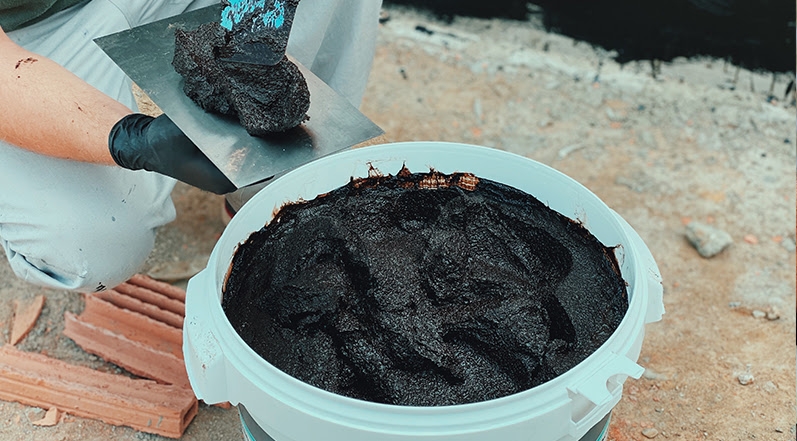
So, we have arrived at the Tar Paper Application Station! Slap that tar paper right onto the cement. Make sure to press it down evenly - we don't want any air bubbles! Want a better seal? Just layer some more cement on the paper.
Let me share a handy tip with you - I've seen a roofing brush or a roller do marvels when spreading cement. It can make things a lot simpler while boosting stability.
Sounds simple enough, right? With tar paper and plastic cement at your disposal, you're armed and ready to wage war on any roof leaks. Hang in there; this temporary fix will keep the damage at bay until you can call in a roofing expert. Besides, this easy yet effective strategy might be just what you need to handle your leaky roof like a champ!
The Importance of Professional Roof Repair
So, you've got a leaky roof, and you're thinking about patching it up yourself, huh? I get it. We all love quick, easy fixes. But in my opinion, those fixes are like putting a band-aid on a wound that really needs stitches.
Yeah, it's going to stop the bleeding for now, but what about later?
Mold can start growing in those nooks and crannies we ignore. The structure of your house could even take a hit. Imagine having to deal with that mess down the line! So, why risk all of these headaches? Isn't it better to bring in the pros the first time to avoid a bigger pain later?

That's where Colony Roofers come in. We handle roofing jobs in Georgia, Florida, and Texas for both homes and businesses. But you know what's cool? We don't see it as just fixing a roof. We're safeguarding your investment—and, most importantly, you.
Think about it. Why put off getting a free roof check? Colony Roofers has many uses beyond being there just to plug leaks—we protect your home or business for the long term. With us, it's about ensuring your peace of mind.
The minute you spot a leak, give us a call. We do top-notch repair and roof installation work. Plus, we give solid advice. So do yourself a favor: let the professionals do their thing. After all, you want to solve the problem, not just cover it up, right?
 Call (678) 365-3138
Call (678) 365-3138


